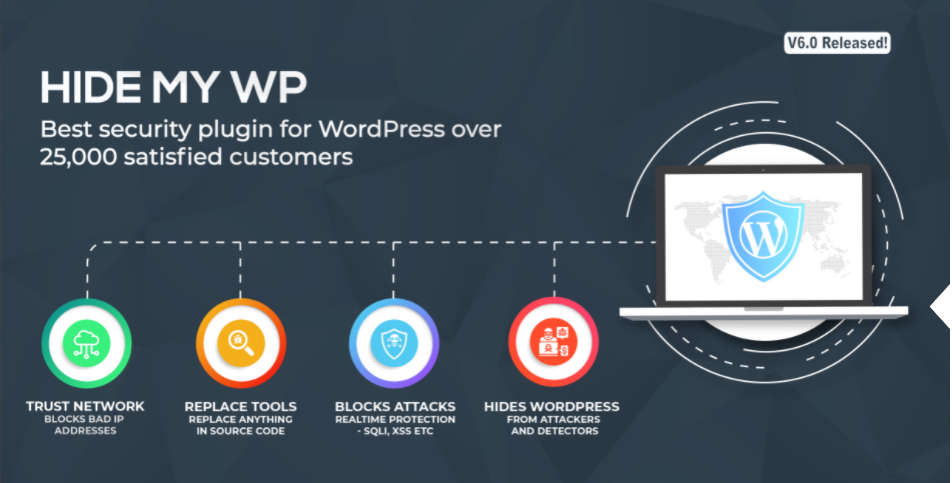All WordPress users have general concerns regarding WordPress security. Preventing hackers from trespassing on your website and protecting it all the time can be a big task. But it is crucial to go through with it, or else your website can be exploited using attacks like OS Command injection.
Taking care of all WordPress vulnerabilities can be bothersome, but the aftermath of a successful attack( like injection attacks) will be much more critical. Various hackers use different attack ways to slip into your website. We must acknowledge this fact and learn about different kinds of attacks to safeguard your website.
Since we are onto an OS command injection attack, few similar attacks that might interest you are SQL injection attacks, XSS attacks, Host header injection attacks, LDAP injection attacks, Email header injection attacks, an XPath injection attack, and more. All these attacks work in different ways to help a hacker get his hands on your website. Hence, pay attention to your website and check if it has OS command injection vulnerabilities. If yes, use this article as a reference for tips to block this kind of attack.

What Does OS Command Injection Attack Mean?
OS command injection attack is also known as shell injection attack. Hackers often use an OS command injection attack to execute an arbitrary operating system command on websites that lack proper input validation.
Shell injection attack differs from code injection attacks because shell injection attack uses input commands to exploit website whereas, code injection attack involves entering code to the input of target website.
Hackers can use OS injection attacks in the following ways:
- A hacker can use a command to display the contents of a specific file as an output.
- An attacker can exploit a program by entering a standard filename if it accepts any filename as a command to view confidential files.
- A hacker can alter the environment variable $APPHOME to manipulate your website to run malicious code directed by him.
The above points are not the only ways a hacker can exploit your website using an OS injection attack, thus we must be careful with this kind of attack.
Some Vulnerabilities Of OS Injection Attacks
Listed below are few vulnerabilities that allow hackers to use OS injection attacks:
- Allowing users to enter arbitrary commands to the website can pave a path for hackers into your website.
- Permitting users to upload files that might contain malicious commands will assist hackers in exploiting your website.
- If your website is vulnerable to server-side injection attacks, it is probably vulnerable to an OS injection attack too.
How To Prevent OS Command Injection Attacks?
We have seen how bad the situation can get if we let attackers find any OS injection vulnerabilities. Thus, let us learn the measures we need to take to prevent this attack.
Input Validation And Sanitization
Not validating input is like welcoming hackers to attack your website. We must check what users are entering in our website to protect our website.
We should allow users to use only alphabets and numbers to prevent input characters that form command syntaxes. We must also analyze, filter, and accept the safe input while blocking any malicious entry.
Create A White List
We must create a white list that contains predefined inputs that we can use. This way, the user inputs that are not on the list will be denied.
Avoid Using System Calls
Hackers can use functions like system() and exec() for their advantage, so we must avoid using system calls and also user inputs if possible.
We have learned about how dangerous attacks like OS Command injections can be. However, this is not the only attack that hackers know and use. They try to find many loopholes in your website and attack it when he finds a perfect opportunity.
We must be looking out for threats from all directions. We have an advanced security plugin that helps protect your website from various attacks and makes WordPress security easy for you. Here are few ways in which the Hide My WP security plugin can help:

- It lets you hide the names of themes and plugins folders.
- It will assist you in changing WordPress permalinks.
- It will allow you to hide the login page of your website to prevent brute-force attacks. This feature will help you set up a login query and login key.
- It lets you hide or rename WP-admins.
- It hides your WordPress from theme detectors, hackers, and bots.
- It has an IDS engine that blocks lethal attacks.
- It has a robust trust network that blocks unknown attacks.
- It will disable direct access to PHP files and directory listing.
- It will help you block potentially dangerous IP addresses.
- It will let you minify HTML and CSS.
- It will allow you to change anything in your source code.
- It informs the user about:
- Value (How they hack you?)
- Page (Which plugin did they use?)
- Impact (How dangerous is that?)
- IP/ users (Where are they from?)
- It has anti-spam included.
Conclusion
- Hackers often use injection attacks of various types to attack a website. An OS command injection attack, also known as a shell injection attack, is a dangerous attack that uses command strings to exploit a website. This attack is different from code injection attacks that use code.
- Attackers can use this attack to display confidential information and files that are supposed to be stayed hidden.
- Allowing users to enter arbitrary inputs and upload arbitrary files can lead to OS command injection attacks.
- We can prevent command injection attacks by validating the input entered by users, creating a list of pre-approved inputs, and avoiding the usage of system calls or minimizing user inputs.
- WordPress security might seem hard, but when we do proper research regarding potential threats to your website, the solution comes to you effortlessly.
- Such an admirable solution to the security issues of your website is the Hide My WP security plugin.
